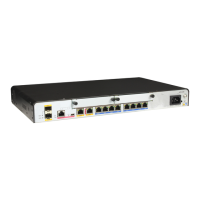Figure 2-12 Networking diagram of configuring transit LSPs through the prefix list
L S RB
G E 1 /0/0
192.1 6 8 .1.1 /2 4
G E 1 /0/0
192.1 6 8 .1.2 /2 4
L S RA
L S RC
G E 2/0/0
192.1 6 8 .2.2 /24
Loopback 1
1.1 .1 .1/3 2
Loopback 1
2.2 .2 .2/3 2
Loopback 1
3.3 .3 .3/3 2
G E 1 /0/0
192.1 6 8 .3.2 /2 4
L S RD
G E 1 /0/0
192.1 6 8 .2.1 /2 4
G E 2 /0/0
192.1 6 8 .3.1 /2 4
Loopback 1
4.4 .4 .4/3 2
Configuration Roadmap
The configuration roadmap is as follows:
1. Configure the IP address of the interfaces, set the loopback address as the LSR ID, and use
OSPF to advertise the network segments to which the interfaces are connected and the LSR
ID host route.
2. Enable MPLS and MPLS LDP globally on the LSRs, and configure the policy of triggering
the establishment of LSPs.
3. Configure the IP prefix list according to the requirement for LSP control.
4. Filter the transit LSP routes by using the IP prefix list on the transit node.
5. Enable MPLS and MPLS LDP on the interfaces.
Data Preparation
To complete the configuration, you need the following data:
l IP address of each interface, OSPF process ID, and area ID
l Policy for triggering the establishment of LSPs
l IP prefix list name, and the routes to be filtered on the transit node
Procedure
Step 1 Configure the IP address of the interfaces, and use OSPF to advertise routes of the network
segments that the interfaces are connected to and the LSR ID host route.
According to Figure 2-12, configure the IP address and the mask of the interfaces, including
the loopback interface, and run OSPF. The configuration details are not provided here.
Step 2 Configure the IP prefix list on the transit.
# Configure the IP prefix list on the transit node LSRB. Only 4.4.4.4/32 of LSRD can be used
to establish the transit LSP.
Huawei AR1200 Series Enterprise Routers
Configuration Guide - MPLS 2 MPLS LDP Configuration
Issue 01 (2011-12-30) Huawei Proprietary and Confidential
Copyright © Huawei Technologies Co., Ltd.
100

